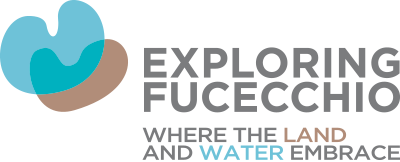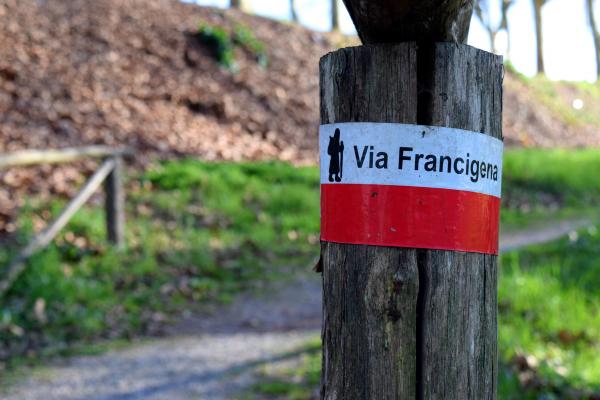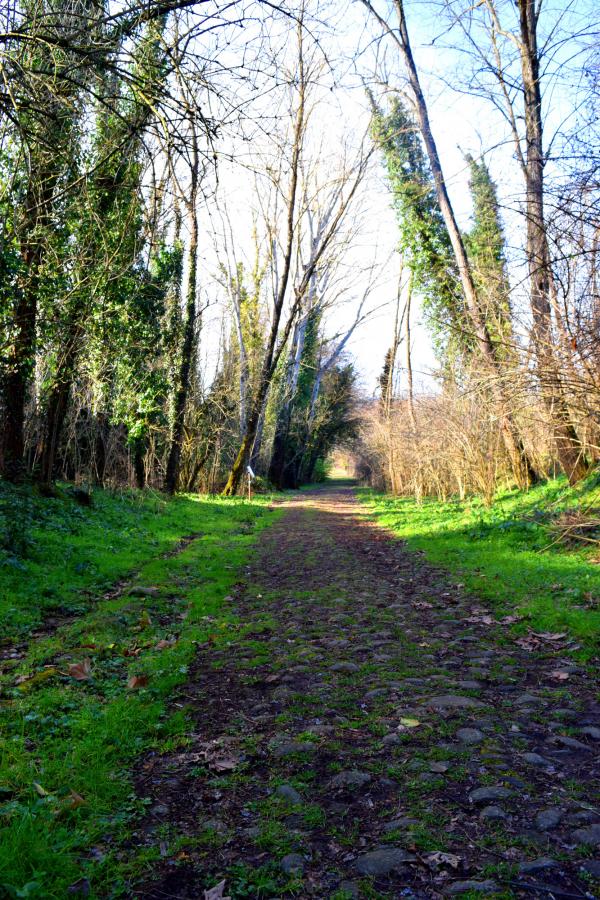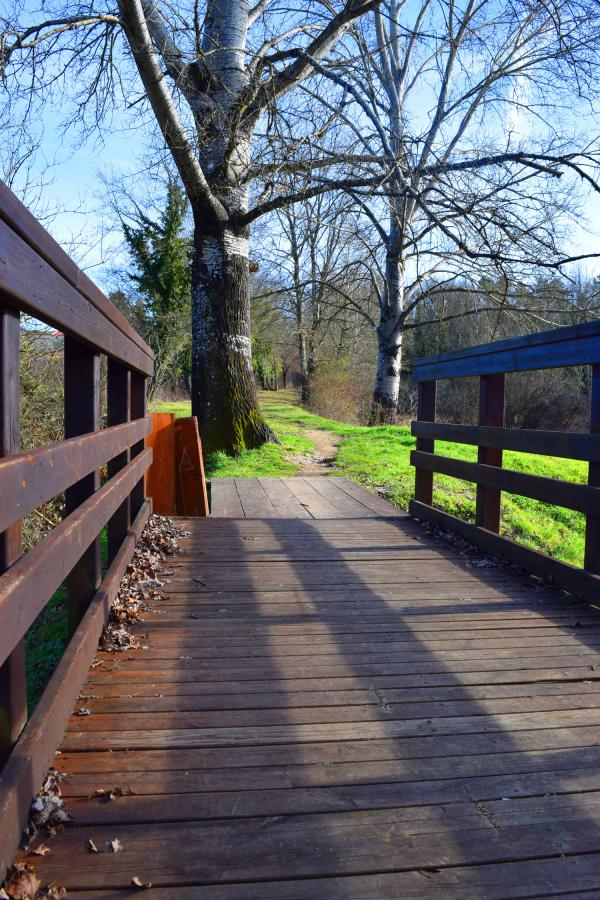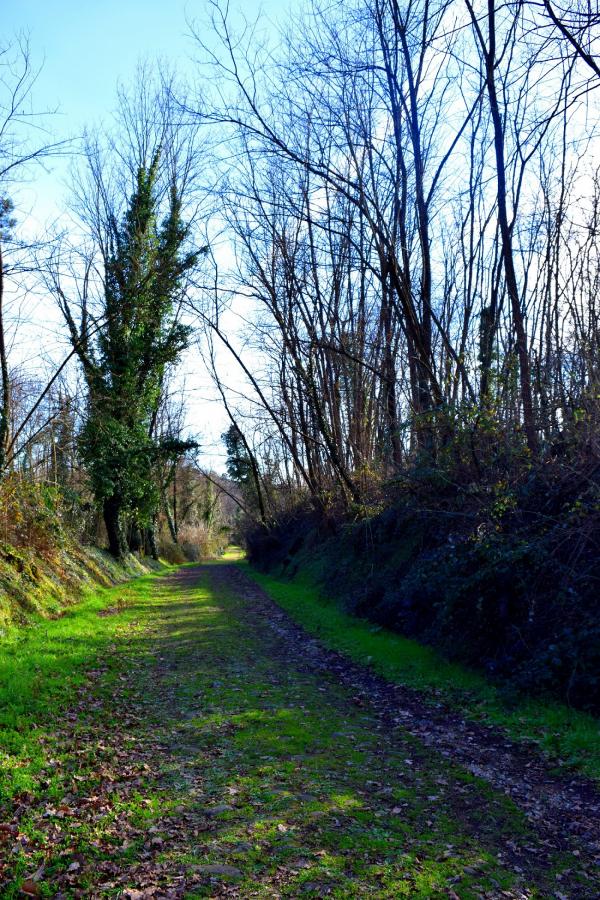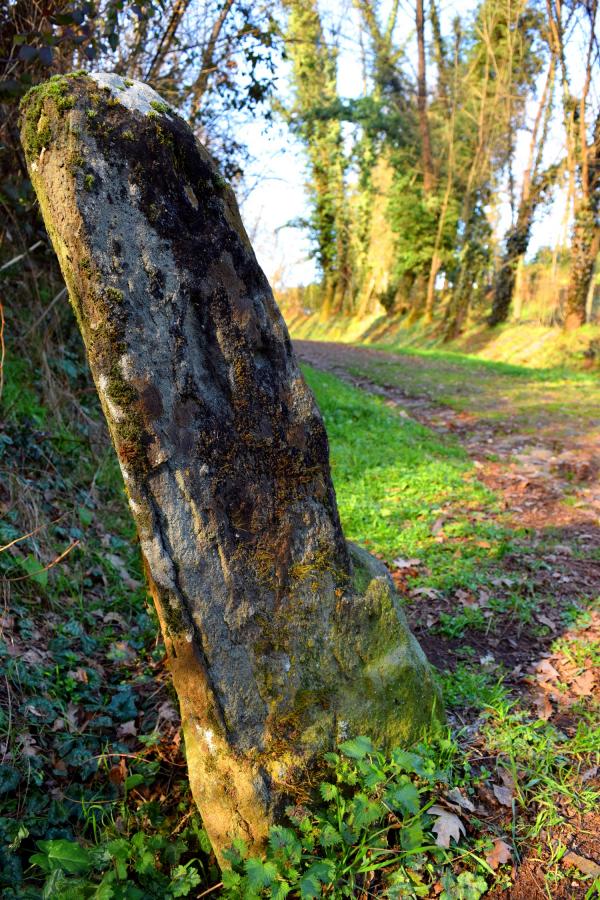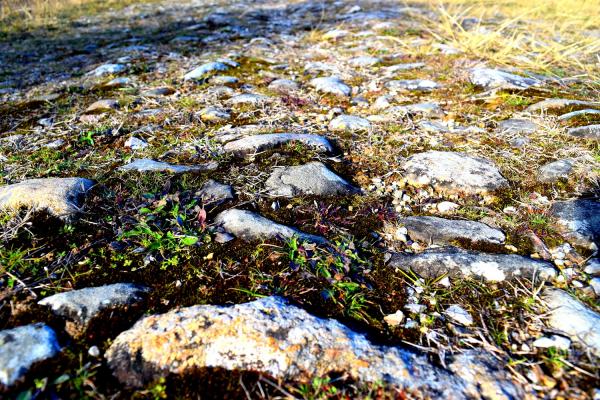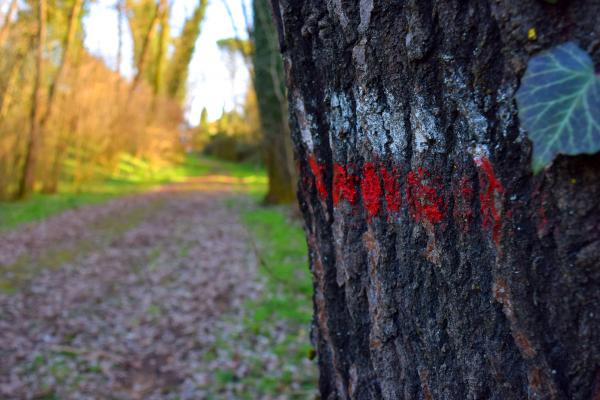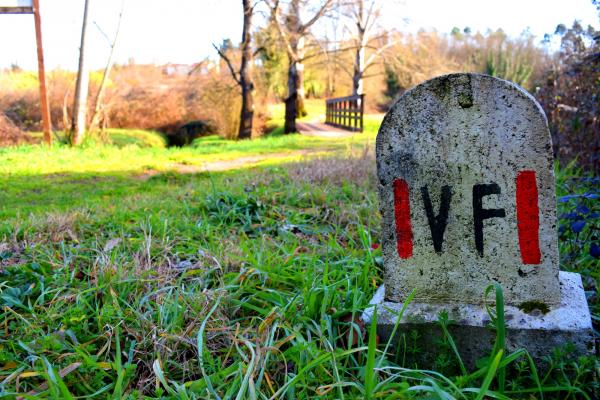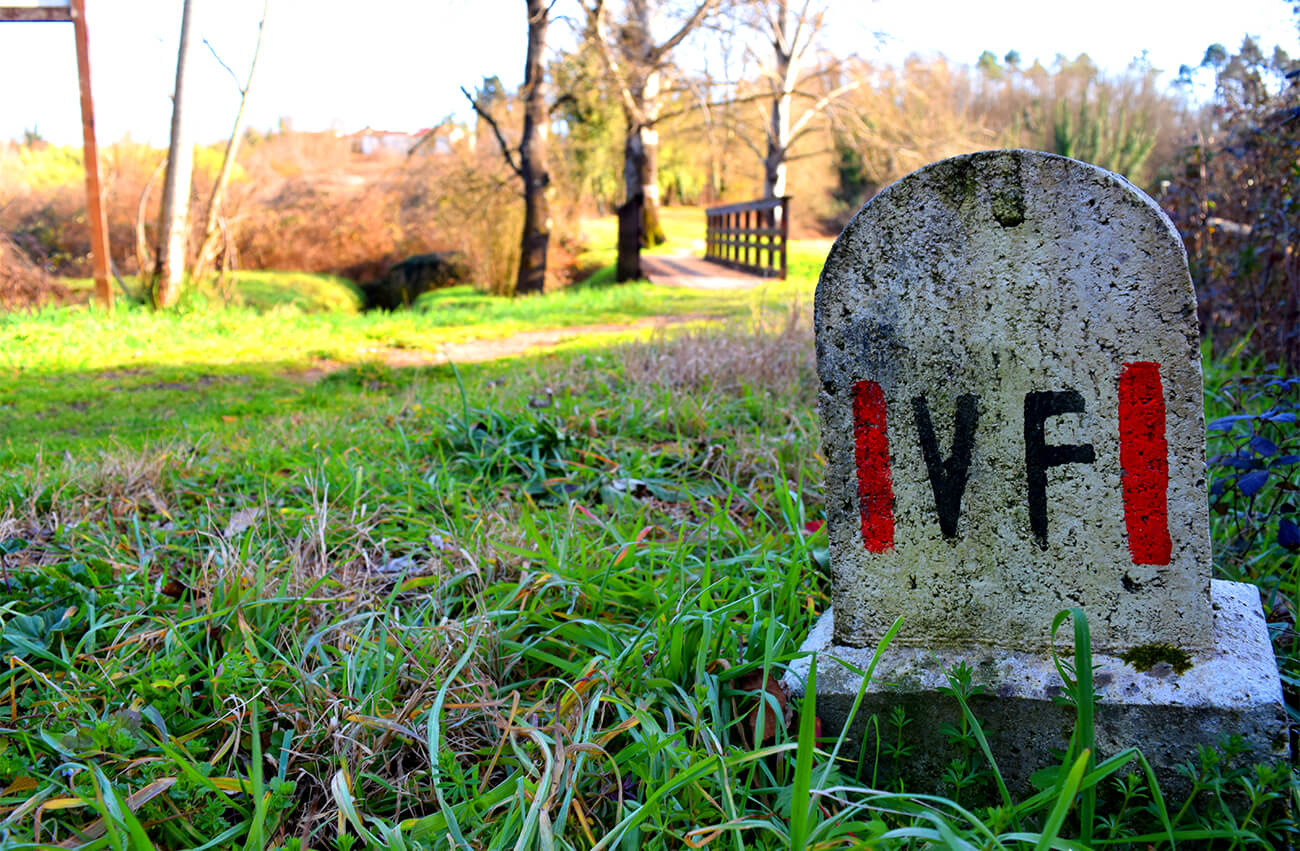
Via Francigena e Romea Strata
Abbandonate le grandi strade, prendete i sentieri.
(Pitagora)
If all roads lead to Rome, the Via Francigena is perhaps the most fascinating. Traced in the Middle Ages, approximately 1800 kilometers long – 1000 of which in Italian territory, starting from the Great St Bernard Pass, for a total of 45 stages -, traveled by hundreds of ancient and modern pilgrims: this is how this main road is told which connected Canterbury to the Eternal City.
It was the year 990 after Christ. The story tells that Abbot Sigeric, ordained bishop of Canterbury, in fact, by Pope John XV, from whom he had visited, had with him a diary in which he was noting and describing the 79 stages traveled back to England, that is the places where he had stopped to stay overnight. The notes of this illustrious pilgrim are still considered the most authoritative source for reconstructing the “philological” path of the Francigena, that is, the one most faithful to historical texts and documents.
As stated on the official website, in fact, it is not possible to identify the “real” route, simply because it never existed: after the fall of the Roman Empire, the great roads were no longer used and paths and tracks multiplied in the various territories , which often varied due to natural causes, new geopolitical borders or the presence of brigands, but which tended to gather and converge in the obligatory passages (for example for crossing a river) or in the inhabited areas where one stopped to eat and sleep. Thus it was that some places now belonging to the Municipality of Fucecchio became part of the itinerary of the Bishop of Canterbury.
The Via Francigena in Fucecchio
Fucecchio is part of stage 29 of the official itinerary and is the leading Municipality of the Central South Aggregation of the Via Francigena Toscana, of which it is part together with Santa Croce sull’Arno, Castelfranco di Sotto, San Miniato, Castelfiorentino, Montaione and Gambassi Terme.
For more information and to download useful materials www.viefrancigene.org
Fucecchio: un castello sulla Francigena
The Francigena and Fucecchio
Over time, the Francigena increased its importance more and more, also becoming the hub of intense trade and commerce, as well as being used by numerous armies in their travels. Fucecchio, which owes part of its first development to this pilgrimage route, was part of that part of the route which, after touching Lucca and Altopascio, entered the Cerbaie woods and crossed the Arno to continue, then, in the direction of Siena. and the Lazio territories.
In Sigerico’s handwritten notes relating to the crossing of the Arno, both “Arne Blanca” and “Aqua Nigra” are found, respectively stages 23 and 24 of the return journey to England: they refer to today’s Fucecchio and the passage to Ponte a Cappiano. More precise information can be found in the introductory text of the Valdarno Museum Network below, where we read:
To cross the Valdarno, the Via Francigena, leaving the hospital center of Altopascio, entered the woods of the Cerbaie hills, the only possible route to avoid the wetlands of the Bientina marshes to the west, and that of Fucecchio to the east. In a central position in the Cerbaie, Galleno, mentioned by Philip Augustus of France on his return from the third crusade (1191), was a point of support for the road. Further south, the route passed through the small hospitals of Santa Trinita di Cerbaia (founded in the 12th century) and of Malatia, known since the 13th century. From this point, two routes can be distinguished, an older one that crossed the River Usciana in Cappiano, perhaps the Arno Nero mentioned by the abbot of Thingor (1151-1154) and by Philip of France. He then traveled across the plain, along a road that probably originated from the centuriate agrarian settlements of the Augustan age, and not by chance established as the border between the communities of Fucecchio and Santa Croce. Later, at the end of the 13th century, this route was modified by splitting it into two sections: one straight towards Fucecchio, the other towards the Rosaiolo bridge on the Esciana. In any case, the Arno pass controlled by the Cadolingian castle of Salamarzana, origin of the municipality of Fucecchio, was then reached. The next route was to head towards the current locality of Roffia and then reach the village of Vico Vallari (San Genesio), mentioned by Sigerico (990-994) and Filippo Augusto (1191), and then proceed to the Valdelsa.
To date, this ancient pilgrimage route can be traveled on foot, by car, by bike or on horseback: only in Tuscany there are about 380 kilometers of route that cross 39 municipalities, and which allow you to rediscover wonderful landscapes and villages rich in history and culture.
Right in the hamlet of Galleno, a tourist cycle route of about 45 km has been inaugurated that crosses the municipalities of the central south area (Fucecchio, Santa Croce sull’Arno, Castelfranco di Sotto, San Miniato, Castelfiorentino, Montaione and Gambassi Terme): the journey into the heart of Tuscany continues.
The alternative route to stage 29 of the Via Francigena
In March 2021 the European Association of the Vie Francigene approved the alternative route to stage 29 of the Via Francigena, which affects the municipalities of Altopascio, Fucecchio and Ponte Buggianese and brings pilgrims to learn about the extraordinary natural areas of this territory.
In fact, the route starts from Altopascio passing through the natural reserve of Lake Sibolla and continues on embankments and country roads to arrive at the Dogana del Capannone (Ponte Buggianese) from where, along the Padule di Fucecchio (Marsh), you reach the Medici bridge of Ponte a Cappiano (Fucecchio).
The Altopascio-Ponte Buggianese-Fucecchio variant is also the only one on the Via Francigena route to offer, compatibly with the water levels, the possibility of covering part of the route on the characteristic little boats of the Marshes.
Discover the stories inspired by the regional stages of the Francigena on the portal of Toscana Ovunque Bella.
Source: Via Francigena through the Valdarno, booklet by the Valdarno di Sotto museum network
In the stretch between Altopascio and San Miniato there are 15 structures for the refreshment and accommodation of pilgrims; of these, seven are located in the municipal area. Consult the complete list of reception places in Fucecchio and surroundings published on the website www.viefrancigene.org.
Discovering the Romea Strata
Fucecchio place of transit for pilgrims who came from England and France, but not only: it is precisely here, in fact, that the Via Francigena met the Romea Strata, an equally important route for those who, coming from the regions of central Europe eastern, intended to reach the eternal city.
The Romea Strata is a path of over 1300 kilometers that is made up of many different routes and which touches five Italian regions (Friuli Venezia Giulia, Trentino Alto Adige, Veneto, Emilia Romagna and Toscana), ideally bringing together all those routes under the same name that from the north-east of Italy allowed pilgrims departing from present-day Poland, the Czech Republic and Austria, as well as from the Balkan area and Croatia, to reach the city – and from there on, it was possible to continue to the ports of the South , from which to embark for Jerusalem. The route is divided into nine sections, whose names recall the territories and the ancient streets traveled, and Fucecchio is the arrival point of the route called Nonantolana-Longobarda, which starts in Fanano and ends in the Tuscan town, for a total of 99 km.
In 2020 Fucecchio also obtained the role of leader of the 12 municipalities that make up the territorial area of the Tuscan Romea Strata, namely Abetone-Cutigliano, San Marcello-Piteglio, Pistoia, Serravalle Pistoiese, Monsummano Terme, Larciano, Quarrata, Lamporecchio, Vinci, Cerreto Guidi, Fucecchio, San Miniato.
The rediscovery of this road network has confirmed the deep identity of Fucecchio, which has always been an authentic crossroads of ancient routes, people from all over the world, stories and emotions.
Romea Strata is an initiative of the Pilgrimage Office of the Diocese of Vicenza, in collaboration with the Italian Center for Compostellan Studies. To find out more, visit the portal www.romeastrata.org.
